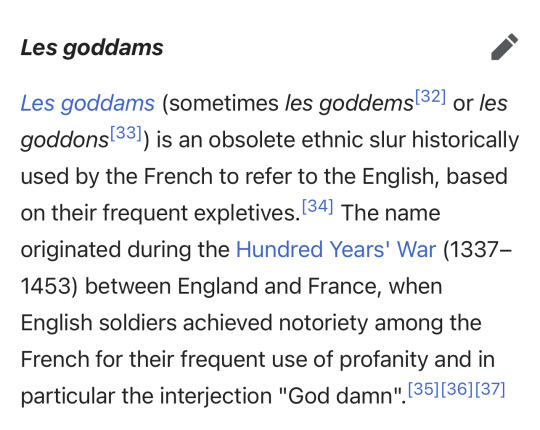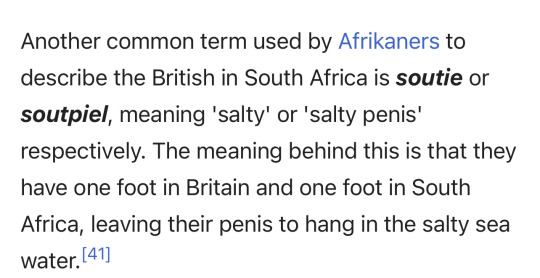#dutch imperialist infighting
Explore tagged Tumblr posts
Text
Because most medicines were produced from [...] plants [...] these early “pharmaceutical monopolies” required full control of the production and trade of a species. Russia successfully managed the rhubarb trade in the seventeenth and eighteenth centuries, while Spain controlled the distribution [...] from Spanish America, mainly cinchona from Peru, in the same period. “True” cinnamon grew only on Sri Lanka, so whoever controlled the island could dominate the cinnamon trade. The Portuguese were the first to create a monopoly on the cinnamon trade there in the early seventeenth century. That monopoly was later optimized by the Dutch in the late eighteenth century [...].
“True” should indeed be in quotation marks here - the term reflects the historically contingent tastes of Europeans, rather than any botanical category [...]. The rarity of cinnamon in the early modern period made it one of the most coveted spices of that era, and European countries without direct access to the cinnamon trade tried to imitate, substitute, steal, smuggle, or transplant the “true” product from Sri Lanka. [...]
---
In the early modern period, cinnamon was also important both as an exotic commodity and as an important therapeutic substance. The Dutch East India Company (VOC), which controlled Sri Lanka between 1658 and 1796, was well aware of this. The VOC vigorously exploited the Salagama - [...] specialized Sri Lankan cinnamon peelers - to supply enough cinnamon, which for a long time was gathered from forests. Only after the peelers rebelled, leading to a war that lasted between 1760 and 1766, did the company revise its production policy.
Experiments with “cinnamon gardens” (kaneeltuinen in Dutch) led to enormous successes, and the company eventually grew millions of cinnamon trees on plantations in the final decades of the eighteenth century. Meanwhile, competitors of the Dutch had come up with their own solutions [...]: Spain had started growing other Cinnamomum species on plantations in the Philippines, while France and Britain succeeded in transplanting cinnamon to islands in the Caribbean. But the Dutch monopoly was not simply threatened by outside competition. Smuggling, by peelers or VOC personnel, was strictly forbidden and severely punished. [...]
---
Hendrik Adriaan van Rheede tot Drakenstein (1636–1691) was the VOC administrator on India’s Malabar Coast when he started experimenting with cinnamon oil in the 1670s.
He concluded that the oil, which he extracted from the roots of local cinnamon trees, was of better quality than oil from cinnamon trees on Sri Lanka. Van Rheede reported these results in his entry on cinnamon in volume 1 of the Hortus Indicus Malabaricus, the twelve-volume book that was produced by a team of local and European scholars, and supervised by Van Rheede himself.
Van Rheede’s assessment of cinnamon - in fact, the very publication of a multi-volume work about the flora of Malabar - infuriated the governor of Sri Lanka, Rijckloff van Goens, who had secured the cinnamon monopoly of Sri Lanka for the Dutch. Van Goens insisted that Van Rheede stop his medical experiments, claiming that the monopoly was at risk if the cinnamon trade was extended beyond the island of Sri Lanka.
But Van Goens was not so much concerned about the therapeutic efficacy of cinnamon from either of the two regions. He was motivated by an imperial agenda and regarded the natural products of Sri Lanka as superior to anything similar in the region.
The experiments of Van Rheede, who was his former protégé, threatened not so much the botanical quality of the product, or the commercial interests of the Dutch East India Company, but rather the central position of Sri Lanka in the Dutch colonial system and the position of Van Goens as the representative of that system.
---
Even when Sri Lanka still only produced cinnamon that grew in the wild, the Dutch harvested enough to supply an international market and were able to dictate the availability and price level throughout the world. The monopoly, whether defined in commercial or pharmaceutical terms, was not easily put at risk by efforts like Van Rheede’s. Those involved in the early modern cinnamon trade were motivated by various reasons to defend or undermine the central position of Sri Lankan cinnamon: botanical, medical, commercial, or imperial. These motives often overlapped.
---
All text above by: Wouter Klein. “Plant of the Month: Cinnamon.” JSTOR Daily. 17 February 2021. “Plant of the Month” series is part of the Plant Humanities Initiative, a partnership of Dumbarton Oaks and JSTOR Labs. [Bold emphasis and some paragraph breaks/contractions added by me. Presented here for commentary, teaching, criticism purposes.]
#dutch imperialist infighting#abolition#ecology#imperial#colonial#ecologies#multispecies#tidalectics#archipelagic thinking#geographic imaginaries#agents of empire#indigenous#indigenous pedagogies#black methodologies#sandalwood and cinnamon
152 notes
·
View notes
Text
like, seriously, "afrikaner" isn't some fancy word for "african". "afrikaners" are very, very much colonialists! this is literally imperialist infighting lol. "afrikaner" means the dutch settlers. the white south africans. the apartheid guys. elon musk's family. i somehow doubt they were much bothered by the thought of "doing a colonialism".


Found a list of terms for British people and these are my favorite
29K notes
·
View notes
Text
Dutch imperialist infighting. Undermined by his own earnest protégé.

Because most medicines were produced from […] mainly plants […] these early “pharmaceutical monopolies” required full control of the production and trade of a species. Russia successfully managed the rhubarb trade in the seventeenth and eighteenth centuries, while Spain controlled the distribution […] from Spanish America, mainly cinchona from Peru, in the same period. “True” cinnamon grew only on Sri Lanka, so whoever controlled the island could dominate the cinnamon trade. The Portuguese were the first to create a monopoly on the cinnamon trade there in the early seventeenth century. That monopoly was later optimized by the Dutch in the late eighteenth century […].
“True” should indeed be in quotation marks here – the term reflects the historically contingent tastes of Europeans, rather than any botanical category […]. The rarity of cinnamon in the early modern period made it one of the most coveted spices of that era, and European countries without direct access to the cinnamon trade tried to imitate, substitute, steal, smuggle, or transplant the “true” product from Sri Lanka. […]
—
In the early modern period, cinnamon was also important both as an exotic commodity and as an important therapeutic substance. The Dutch East India Company (VOC), which controlled Sri Lanka between 1658 and 1796, was well aware of this. The VOC vigorously exploited the Salagama – […] specialized Sri Lankan cinnamon peelers – to supply enough cinnamon, which for a long time was gathered from forests. Only after the peelers rebelled, leading to a war that lasted between 1760 and 1766, did the company revise its production policy.
Experiments with “cinnamon gardens” (kaneeltuinen in Dutch) led to enormous successes, and the company eventually grew millions of cinnamon trees on plantations in the final decades of the eighteenth century. Meanwhile, competitors of the Dutch had come up with their own solutions […]: Spain had started growing other Cinnamomum species on plantations in the Philippines, while France and Britain succeeded in transplanting cinnamon to islands in the Caribbean. But the Dutch monopoly was not simply threatened by outside competition. Smuggling, by peelers or VOC personnel, was strictly forbidden and severely punished. […]
—
Hendrik Adriaan van Rheede tot Drakenstein (1636–1691) was the VOC administrator on India’s Malabar Coast when he started experimenting with cinnamon oil in the 1670s.
He concluded that the oil, which he extracted from the roots of local cinnamon trees, was of better quality than oil from cinnamon trees on Sri Lanka. Van Rheede reported these results in his entry on cinnamon in volume 1 of the Hortus Indicus Malabaricus, the twelve-volume book that was produced by a team of local and European scholars, and supervised by Van Rheede himself.
Van Rheede’s assessment of cinnamon – in fact, the very publication of a multi-volume work about the flora of Malabar – infuriated the governor of Sri Lanka, Rijckloff van Goens, who had secured the cinnamon monopoly of Sri Lanka for the Dutch. Van Goens insisted that Van Rheede stop his medical experiments, claiming that the monopoly was at risk if the cinnamon trade was extended beyond the island of Sri Lanka.
But Van Goens was not so much concerned about the therapeutic efficacy of cinnamon from either of the two regions. He was motivated by an imperial agenda and regarded the natural products of Sri Lanka as superior to anything similar in the region.
The experiments of Van Rheede, who was his former protégé, threatened not so much the botanical quality of the product, or the commercial interests of the Dutch East India Company, but rather the central position of Sri Lanka in the Dutch colonial system and the position of Van Goens as the representative of that system.
—
Even when Sri Lanka still only produced cinnamon that grew in the wild, the Dutch harvested enough to supply an international market and were able to dictate the availability and price level throughout the world. The monopoly, whether defined in commercial or pharmaceutical terms, was not easily put at risk by efforts like Van Rheede’s. Those involved in the early modern cinnamon trade were motivated by various reasons to defend or undermine the central position of Sri Lankan cinnamon: botanical, medical, commercial, or imperial. These motives often overlapped.
—
Text by: Wouter Klein. “Plant of the Month: Cinnamon.” JSTOR Daily. 17 February 2021. “Plant of the Month” series is part of the Plant Humanities Initiative, a partnership of Dumbarton Oaks and JSTOR Labs. [Bold emphasis and some paragraph breaks/contractions added by me.]
#even if he could both create a higher quality product while simultaneously continuing to uphold his companys profits and monopoly#van goens still rather prioritize his ego and his commitment to keeping sri lanka under tight control#intoxicated with colonialism#south asia#indian
152 notes
·
View notes